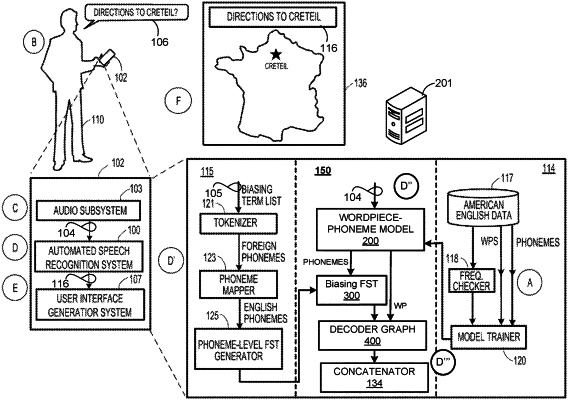| CPC G10L 15/063 (2013.01) [G10L 15/02 (2013.01); G10L 15/187 (2013.01); G10L 15/193 (2013.01); G10L 15/285 (2013.01); G10L 15/32 (2013.01); G10L 25/30 (2013.01); G10L 2015/025 (2013.01)] | 20 Claims |

|
1. A computer-implemented method when received by data processing hardware causes the data processing hardware to perform comprising:
receiving audio data corresponding to an utterance, the utterance comprising at least one word in a first language and a particular word in a second language different than the first language;
receiving a biasing term list comprising the particular word in the second language;
processing, using a speech recognition model, the audio data to generate a plurality of speech recognition hypotheses for the utterance, each speech recognition hypothesis of the plurality of speech recognition hypotheses comprising a corresponding phoneme sequence in the first language and a corresponding speech recognition score;
rescoring, using one or more terms in the second language from the biasing term list, the corresponding speech recognition scores for the corresponding phoneme sequences in the first language generated by the speech recognition model; and
using the rescored speech recognition scores for the corresponding phoneme sequences in the first language, executing a decoding graph to output a transcription of the utterance by biasing the transcription to favor inclusion of the particular word in the second language from the biasing term list.
|